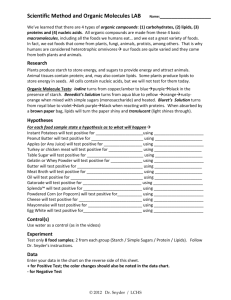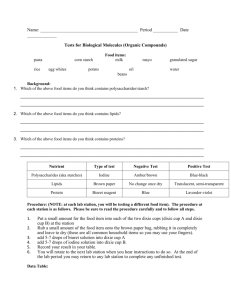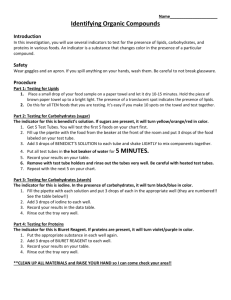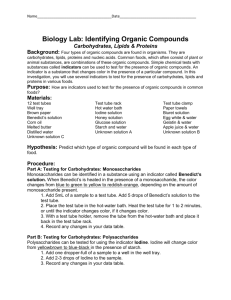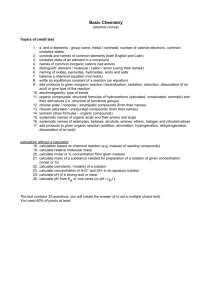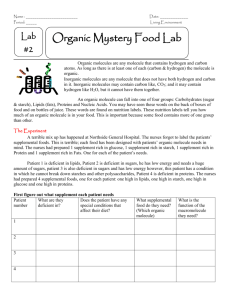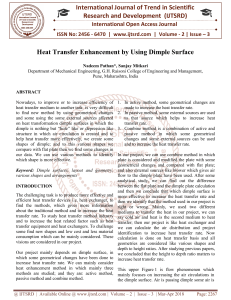Identifying Organic Compounds Lab Report
advertisement
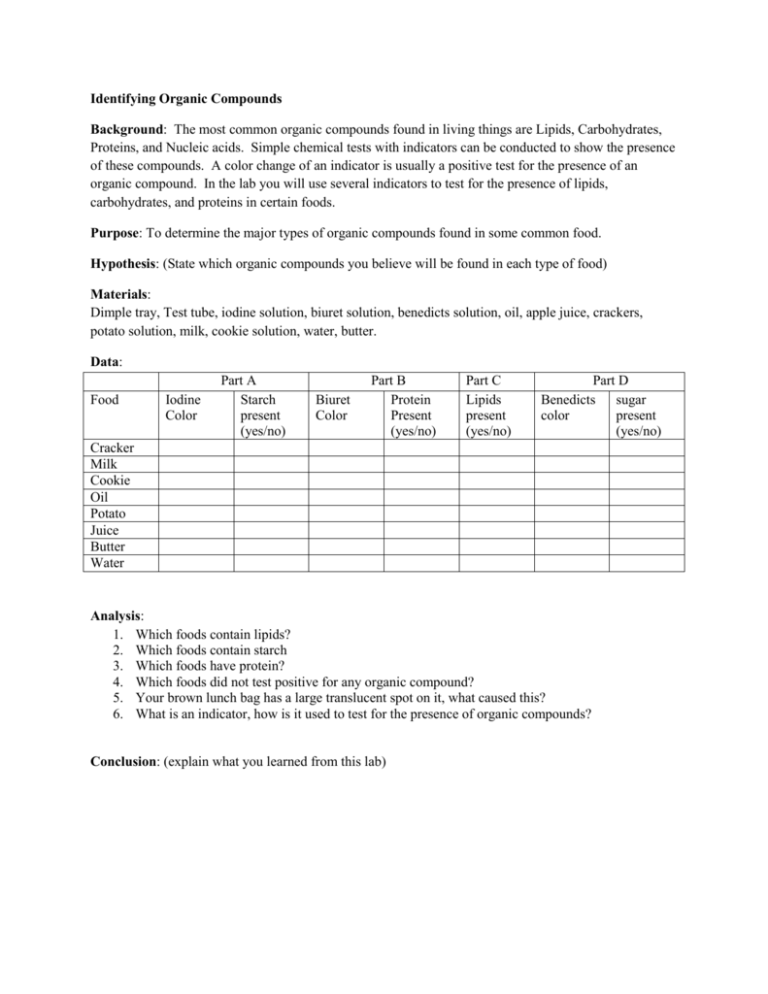
Identifying Organic Compounds Background: The most common organic compounds found in living things are Lipids, Carbohydrates, Proteins, and Nucleic acids. Simple chemical tests with indicators can be conducted to show the presence of these compounds. A color change of an indicator is usually a positive test for the presence of an organic compound. In the lab you will use several indicators to test for the presence of lipids, carbohydrates, and proteins in certain foods. Purpose: To determine the major types of organic compounds found in some common food. Hypothesis: (State which organic compounds you believe will be found in each type of food) Materials: Dimple tray, Test tube, iodine solution, biuret solution, benedicts solution, oil, apple juice, crackers, potato solution, milk, cookie solution, water, butter. Data: Food Iodine Color Part A Starch present (yes/no) Biuret Color Part B Protein Present (yes/no) Part C Lipids present (yes/no) Part D Benedicts sugar color present (yes/no) Cracker Milk Cookie Oil Potato Juice Butter Water Analysis: 1. Which foods contain lipids? 2. Which foods contain starch 3. Which foods have protein? 4. Which foods did not test positive for any organic compound? 5. Your brown lunch bag has a large translucent spot on it, what caused this? 6. What is an indicator, how is it used to test for the presence of organic compounds? Conclusion: (explain what you learned from this lab) Procedures: Part A Testing for Starch 1. Place 5-8 drops of each food in each dimple tray 2. Add 2 drops of iodine solution to each food in the dimple. Iodine will change from yellowbrown to blue-black in the presence of starch. In you data table, record any color changes and write yes or no to say if the food contains starch. Wash out your dimple trays after each step. Part B Testing for Proteins 1. Place 5-8 drops of each food in each dimple tray 2. Add 2 drops of Biuret solution to each food in the dimple. Biuret will change to blue-violet in the presence of protein. In you data table, record any color changes and write yes or no to say if the food contains protein. Wash out your dimple trays after each step. Part C Testing for Lipids Divide a piece of brown paper into 8 sections. Write down the names of each food in each section. In each section put a small amount of the food solution on the paper. Let the paper dry. Hold the paper to the light. If a lipid is present a translucent spot will show up on the paper. Write yes or no in the data table to show if a lipid is present. Part D Testing for simple sugars (if time) Place 15 drops of apple juice in a test tube. Add 10 drops of Benedicts solution to this and shake gently. Take your tube to the water bath to be heated for several minutes. If a simple sugar is present a yellow, orange or red color change will occur. Wash out your tube. Repeat this procedure using milk.

